Plott Hound History: Plott Hound Dog Breed Information
The Plott Hound is a dog breed renowned for its skill in tracking and hunting large game, especially bears. Its distinctive coat, often a striking brindle pattern or black with brindle stripes, catches the eye. Originating from the German Hanoverian Schweisshund, the breed made its way to the United States around 1750 and has been a mainstay in North Carolina ever since.
These dogs are known for their sharp intelligence, friendly nature, and fearless attitude. Plott Hounds form deep bonds with their families and have an instinct to guard their home, which makes them excellent guard dogs. They thrive on regular physical activity and ongoing training to stay healthy in body and mind.
When considering adding a Plott Hound to your family, it’s wise to check for health certifications to avoid inherited health conditions. With their muscular build and lovable personalities, Plott Hounds make outstanding companions.
Key Takeaways
- Plott Hounds excel in hunting and have eye-catching coats.
- They’re intelligent, devoted, and make great protectors.
- Prioritize health checks when adopting for a happy, long-term bond.
Plott Hounds are skilled hunters with brindle coats. These dogs bond strongly with families and are natural protectors. Health certifications are vital for adopting a Plott Hound.
Quick Facts
The Plott Hound stands out for its exceptional tracking skill, sturdy build, and striking brindle coat. Unlike other hounds, its roots are not tied to the foxhound but have a distinct heritage celebrated by enthusiasts.
Male Plott Hounds typically stand between 20 and 25 inches tall at the shoulder, while females are generally smaller. These dogs, recognized by the American Kennel Club, are known for their overall good health. However, owners should be aware of potential health issues like hip dysplasia and bloat.
For a Plott Hound to stay fit and sharp in tracking, it’s essential to provide them with about an hour of exercise daily and feed them a balanced diet, which includes 2 to 3 cups of premium dry food divided into two servings.Plott Hound Pictures
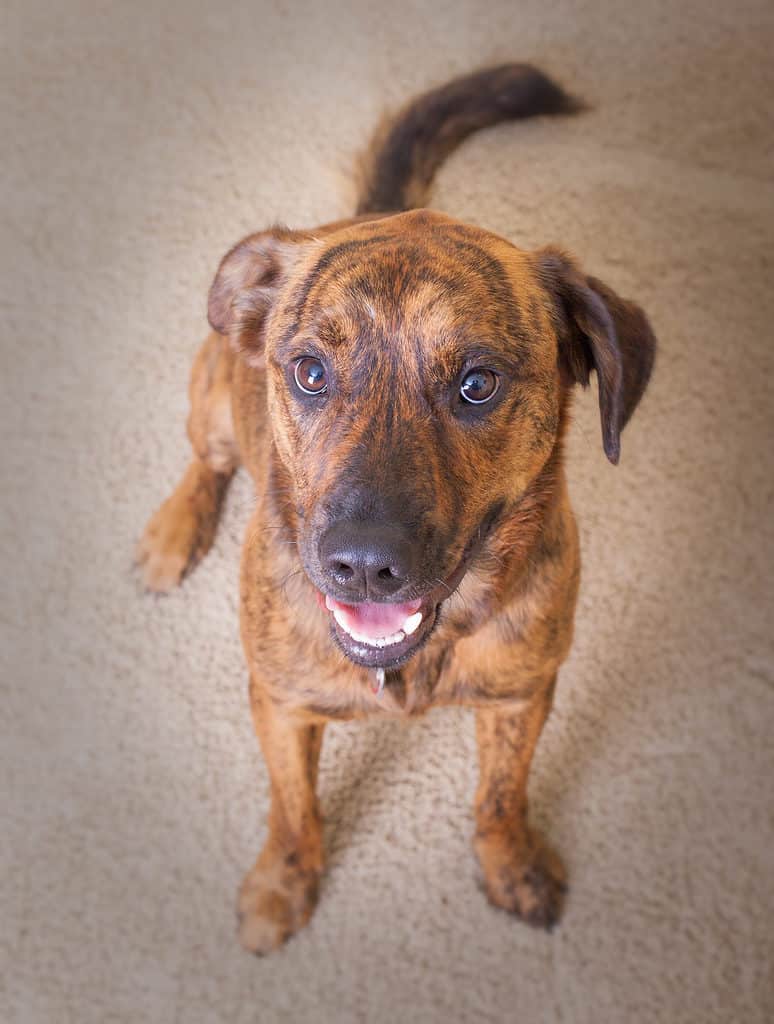
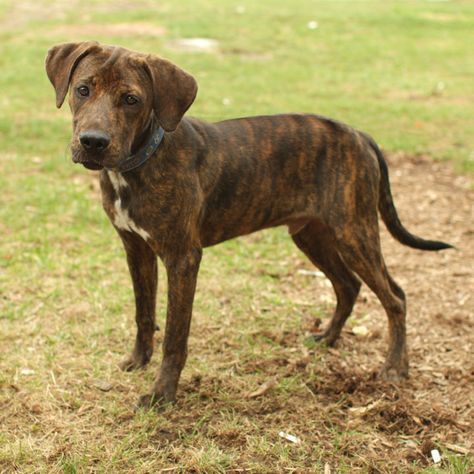
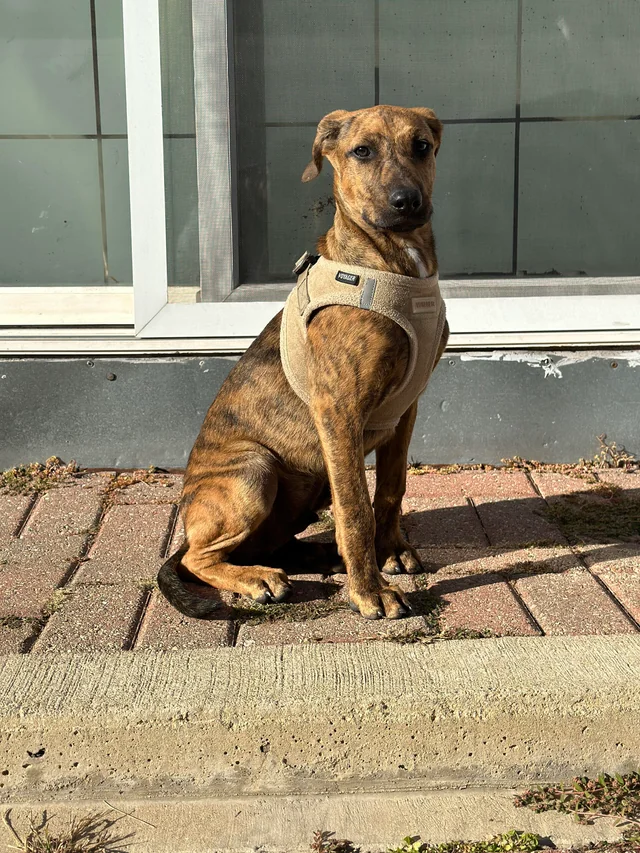
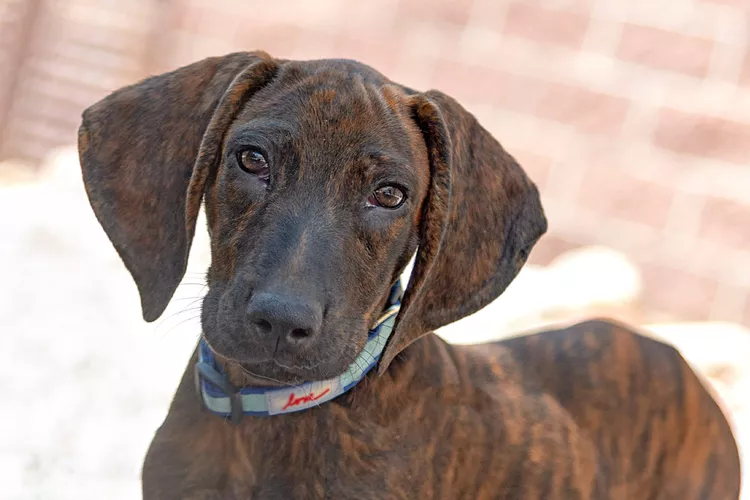
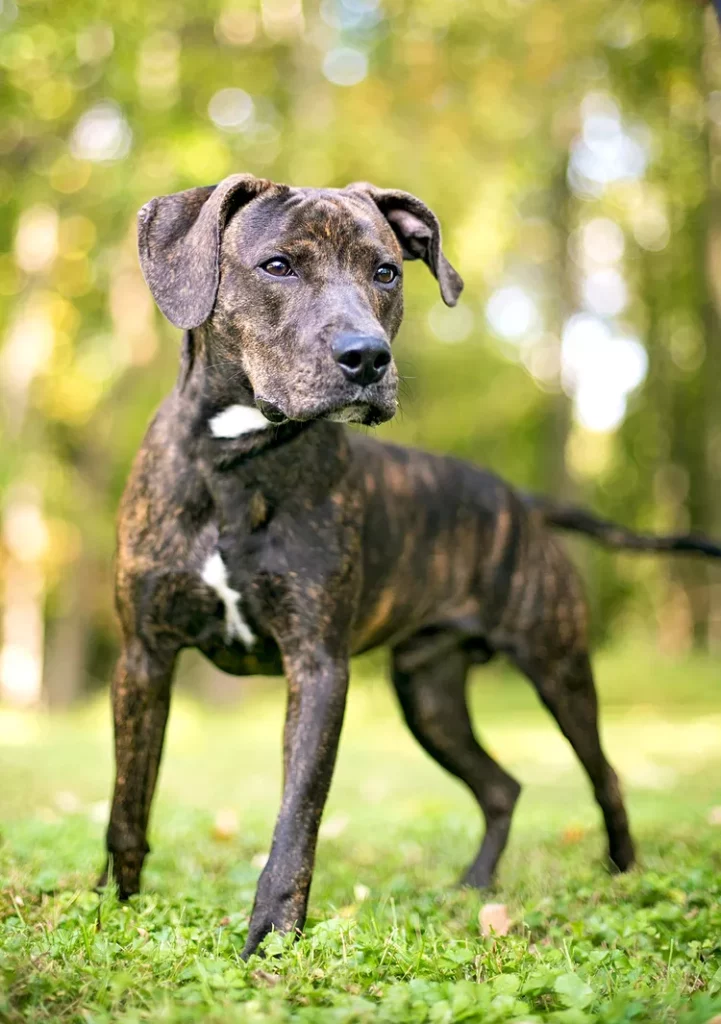
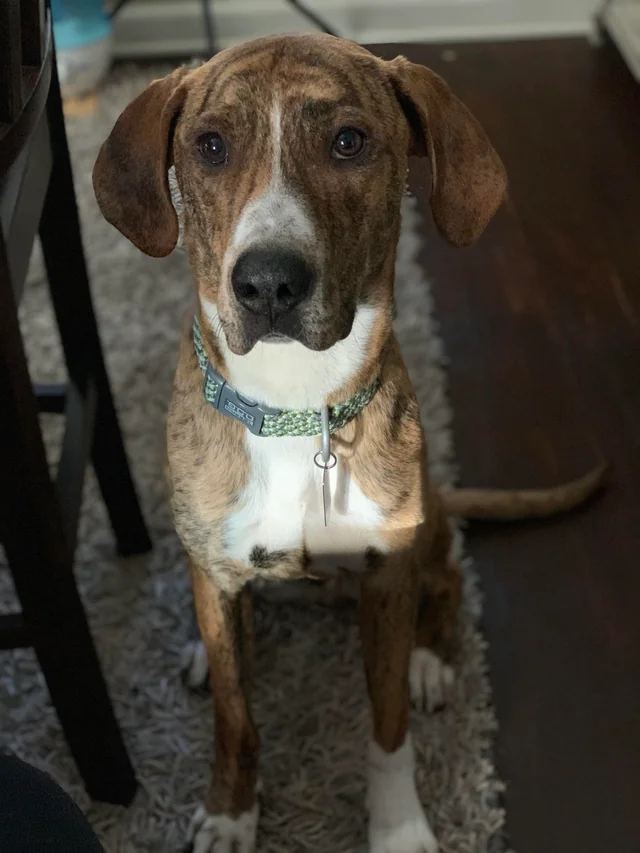
Overview
The Plott Hound stands out in the Hound Group for its exceptional hunting skills and distinctive brindle coat, a nod to its deep roots in North Carolina’s hunting culture. This breed is the ideal hunting partner, as it blends agility, strength, and an acute sense of smell. The Plott Hound was bred over two hundred years ago with a medium-sized, muscular build for chasing down bears and wild boars. It’s a capable hunter and a warm and brave protector of its family.
Owners considering a Plott Hound must know the breed’s need for regular exercise and be proactive about its health to keep the dog physically and mentally fit. This involves regular vet check-ups, a suitable diet, and enough physical activity to satisfy the dog’s high energy levels.
Key Traits
The Plott Hound is well-regarded for its hunting skills, but it’s also a devoted and intelligent companion, making it great for families. This breed’s intense desire to chase is inherited from its ancestors and requires an owner who can guide it with firm, consistent training and keep it busy with plenty of activities.
The distinct brindle coat is not just for looks; it helps the dog blend into the environment when hunting.
When we consider the Plott Hound’s characteristics, we see a breed that excels in hunting and thrives as a caring and loyal family member with the right environment and attention. Owners should know this dog’s drive to chase is high, its commitment to its human family is profound, and its ability to learn and respond to training is remarkable.
The athletic build of the Plott Hound indicates its readiness for physically demanding tasks. Recognizing these traits helps us understand the needs and nature of the Plott Hound as a multifaceted companion.
Plott Hound History and Breed Origins
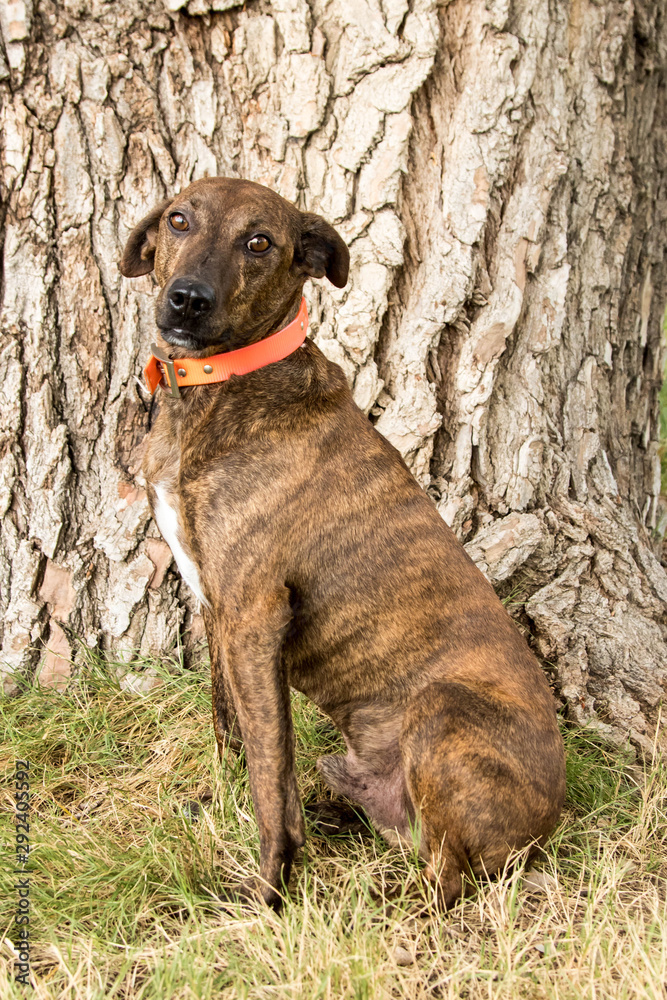
The Plott Hound has a rich history that showcases its strength and ability to adapt. The breed started with German origins, where its ancestors were celebrated as powerful hunting dogs with a knack for perseverance.
These dogs were known for their exceptional skill in tracking prey across challenging landscapes. In America, these dogs were shaped by breeders in the Appalachian Mountains, which led to the Plott Hound’s reputation as a testament to innovative dog breeding practices.
The Plott Hound’s journey reflects its transformation from a German hunting companion to a beloved breed in the United States. This story concerns a breed’s survival and successful integration into a new culture and environment.
Germanic Roots
The Plott Hound has its roots in the tradition of European boar hunting, tracing back to the Hanoverian Schweisshunds of Germany. When Johannes Plott arrived in North Carolina from Germany, he brought more than just his ancestry; he brought prized hunting dogs. These animals were crucial in creating the Plott Hound, a breed that stands out from other coonhounds due to its absence of foxhound lineage. The Plott Hound boasts a singular status, proudly reflecting its German heritage.
In the rugged mountains of western North Carolina, the Plott family played a significant role in refining the breed. The Plott Hound represents a perfect example of how a species can adapt and thrive, merging its historical background with its new environment.
The breed’s history blesses it with speed, agility, and stamina, epitomized by its striking brindle coat.
Hunting Lineage
The Plott Hound has a history of over 200 years in North Carolina, tracing back to a pair of Hanoverian Schweisshunds introduced to America in the 18th century. These dogs were selectively bred for their strength and determination, which made them exceptional at hunting bears and wild boars.
Their descendants were prized for their superior tracking skills and ability to endure the rugged Smoky Mountains. This careful breeding has preserved the Plott Hound’s skill in working with hunting groups, a quality that is still highly valued.
The illustrious line of the Plott Hound, including notable ancestors like Tige and Boss, clearly indicates the breed’s outstanding hunting abilities and steadfast role as a trusted partner for hunters.
American Development
In the late 1700s, American pioneers in North Carolina refined the Plott Hound breed, aiming to boost its hunting prowess and adjust its abilities to the demanding environments and wildlife of the New World.
The Plott family in the mountainous terrain of western North Carolina expertly mixed their hounds with dogs from the region, creating a line celebrated for its tracking skills and unique brindle coat.
This selective breeding strengthened the Plott Hound’s standing as a top hunting dog across the country, especially noted for taking down challenging prey like wild boar.
The breed’s successful adaptation in the United States showcases the Plott family’s dedication to maintaining its distinguished hunting lineage amid America’s wild frontiers.
Factors to Consider: Physical Dimensions
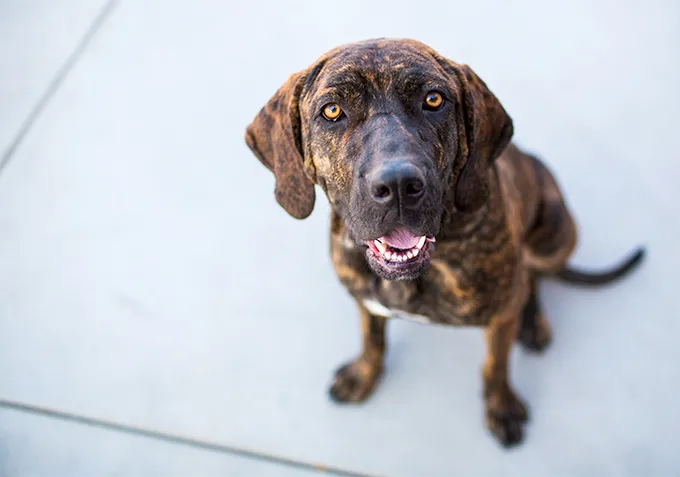
The Plott Hound is known for its robust and agile build, directly resulting from its history as an efficient hunting dog. A closer look at their physique shows a height-to-weight ratio that offers a great mix of speed and strength, ideal for the chase.
Their bodies are crafted for endurance and power, a nod to their history as diligent working dogs. The coat of a Plott Hound is practical for navigating through varied landscapes and has a unique look that sets them apart.
Understanding the physical features of the Plott Hound helps us appreciate how these traits contribute to their capabilities and why they are admired by many.
Height and Weight
Male Plott Hounds stand between 20 and 25 inches tall at the shoulder and tip the scales at 50 to 60 pounds. Female Plott Hounds are slightly smaller, range from 20 to 23 inches in height, and weigh around 40 to 55 pounds.
These dogs were bred for hunting, and their physical build reflects that, demonstrating a balance of endurance and agility for chasing game across rugged landscapes. They have a well-muscled body and lack unnecessary loose skin, showing their lineage of selective breeding to create effective hunting partners.
Build Type
The Plott Hound’s physical build significantly affects its effectiveness as a hunting dog. Its streamlined body shape is perfect for endurance and quick movements, which are critical during a hunt. The breed’s deep chest indicates a strong heart and lungs, which are necessary to maintain energy during long pursuits. A Plott Hound’s lengthy tail helps with balance, allowing it to move swiftly through thick brush.
Male Plott Hounds are generally larger, giving them an imposing look and added power. On the other hand, the slightly smaller females can move quickly, making them excellent at quick turns and sprints. Their coat, acceptable to medium in texture and glossy finish, likely contributes to their speed, allowing them to move without resistance.
These characteristics make the Plott Hound a relentless and capable partner in hunting.
Coat Length
The Plott Hound sports a coat that can be either short or medium in length, which suits their lean and efficient hunting body. Not just for looks, their coat type helps the hound move quickly and with stamina across various landscapes.
A medium-textured fur makes it easy to brush out loose hairs and keep the coat shiny, maintaining a low-drag profile for high-speed pursuits. The hound’s distinctive brindle jacket does more than blend into the woods; it highlights their muscular build, vital in their past and present hunting roles.
Typical Growth Patterns
Plott Hounds typically grow continuously until they reach their full size when they’re about 12 to 18 months old. Their growth goes hand in hand with their need for regular exercise to develop a robust and muscular body characteristic of the breed.
During their critical growth period, the amount of physical activity they get will significantly influence their health and body development. Training with positive reinforcement builds good behavior and helps in conditioning their bodies.
A balanced diet and consistent exercise are vital for Plott Hounds to keep their athletic build, which supports their natural abilities of speed, stamina, and endurance.
Choose a Dog with Size Variations
Plott Hounds are known for their consistent appearance, but even within the breed, there are slight differences in size due to their genes and the environment they grow up in.
Male Plott Hounds usually stand about 20 to 25 inches tall at the shoulder, whereas female dogs are often a bit shorter, ranging from 20 to 23 inches. These size differences are typical in dogs and are tied to the unique roles males and females have played in hunting and tracking throughout history.
As for weight, males often tip the scales at 50 to 60 pounds and females at 40 to 55 pounds. Their medium-sized bodies, sleek shape, and broad chests make them agile and enduring hunters.
When raising a Plott Hound puppy, you can expect it to grow into these size ranges, becoming a solid and well-balanced adult dog.
Temperament Traits
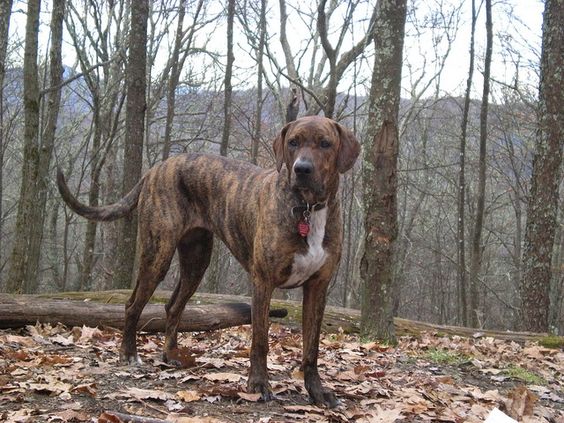
The Plott Hound is known for having a complex temperament, making it a versatile dog for various settings and duties.
Those looking for a faithful companion will appreciate this breed’s deep bond with its family.
It’s vital to manage their hunting instincts correctly, as their natural drive to chase can lead to unwanted scenarios if not appropriately directed.
With their sharp minds, Plott Hounds respond well to consistent training, which is vital to becoming well-mannered household members.
Recognizing and meeting the needs specific to the Plott Hound’s character is essential for their happiness and well-being.
Friendly Family Pet
Plott Hounds are known for being friendly and social, making them great additions to any family. They are loyal and loving, with a strong desire to make their owners happy, which makes training them a smoother experience.
These dogs get along well with other pets due to their pack mentality, making them excellent companions. Introducing them to different people and environments early on helps them become well-adjusted and protective family members.
Plott Hounds are naturally vigilant, but they’re also known for being gentle, making good watchdogs that won’t be overly aggressive. With the proper guidance and training, a Plott Hound can become a cherished member of your home.
High Prey Drive Management
Training Plott Hounds to manage their prey drive is vital for a peaceful coexistence. These dogs are natural hunters with keen instincts for tracking and capturing games. Without proper guidance, these instincts can lead to challenging behaviors.
Innovative training techniques that engage their sharp minds and willingness to please can help control these impulses. Starting socialization early is also vital, introducing them to various settings, creatures, and individuals to prevent problem chasing.
With regular, exciting training sessions, Plott Hounds learn to use their prey drive positively, making them excellent companions and skilled hunters.
Training Responsiveness Levels
Understanding the unique personality traits of a Plott Hound is critical to designing an effective training program. These dogs are known for their intelligence and are usually straightforward to train, thanks to their loyalty and keenness to please their owners. Yet, the success of their training depends greatly on starting early and keeping to a routine.
Plott Hounds benefit from early socialization and training to prevent potential dominance or aggression issues.
Due to their protective instincts and affection for their family, which includes older children and other dogs, Plott Hounds can learn to exhibit positive behaviors. It’s vital to apply rules and commands consistently, making the most of the Plott Hound’s natural ability to adapt and their preference for a structured environment.
Socialization Importance
A Plott Hound needs regular socialization to become a balanced, friendly pet. This breed may be naturally cautious around strangers, so owners must start early socialization. By introducing them to different people, places, and other animals, you teach them to recognize what’s threatening and not. This prevents aggression and nurtures a calm, approachable behavior.
Being part of a pack is in a Plott Hound’s nature, making social interaction key to promoting good habits and preventing dominance issues. Regular, diverse social experiences will tap into their innate friendliness and ensure they grow into well-behaved companions.
Independent Nature Handling
Training a Plott Hound requires a balancing act. It would be best if you were firm and showed that you understand their self-sufficient nature to avoid resistance during training sessions.
Even though Plott Hounds can handle being alone for a while, they still need a structured environment and activities to keep them from developing bad habits due to their independent streak.
Training must be consistent and reward-based, tapping into their instincts. Owners should take on the role of a leader, building a bond where the dog feels safe and its independence is directed positively at home.
Health Concerns & Wellness
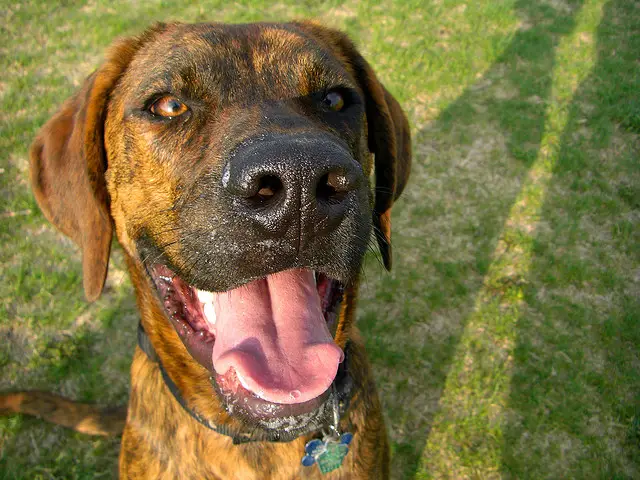
The sturdy Plott Hound is prone to specific health issues that require careful attention and proactive management for a healthy, active life.
Common Health Problems:
These dogs may inherit conditions like hip dysplasia, making early health screenings and preventive measures critical. Regular veterinary check-ups are vital to catch any health problems early and manage them effectively.
Preventive Health Strategies:
A balanced diet, regular exercise, and consistent grooming can significantly decrease the likelihood of illnesses and promote a better life for these energetic dogs.
Common Health Issues
Plott Hounds are naturally hardy but can face health challenges like hip dysplasia, bloat, and gastric torsion. Preventive care and regular vet visits are vital to managing these conditions.
Hip dysplasia is an inherited issue with the hip joints, but good breeders often screen for it. Bloat and gastric torsion affect the stomach and can be urgent, so sticking to a proper feeding routine is essential.
Catching problems early through consistent check-ups helps keep Plott Hounds healthy and energetic. As an owner, you must ensure your dog’s well-being with attentive care.
Wellness Check Routines
Owners of Plott Hounds should prioritize setting up regular vet appointments to keep track of their pet’s health and handle any breed-specific issues like hip dysplasia and bloat. A close relationship with your vet is critical to catching and managing these health problems early on.
As a responsible Plott Hound owner, providing proper grooming and nutrition is vital, as well as ensuring your dog gets the appropriate health certifications. This proactive approach helps maintain your dog’s well-being and can prevent health issues from worsening through early care and treatment.
Preventative Care Measures
Caring for Plott Hounds means being proactive about their health. Screening for genetic conditions like hip dysplasia and hypothyroidism from trusted breeders is a bright start. Staying on top of veterinary check-ups and keeping their vaccinations up-to-date is vital in warding off infectious diseases.
Consistent grooming habits, such as brushing their coat and cleaning their ears, prevent skin problems. It’s also critical for owners to be alert to the signs of bloating or a dangerous condition and to get immediate help if they suspect it.
Introducing your Plott Hound to various people and situations early on prevents future behavioral problems, leading to a friendly and well-behaved dog. These steps are vital in building a solid healthcare routine for your Plott Hound.
Grooming & Maintenance
Caring for a Plott Hound’s coat is essential for its health and mirrors the practical needs of this breed. Regular brushing each week helps reduce excess hair and allows you to check for any skin problems, all while strengthening your bond with your pet.
Baths must be infrequent to keep the dog’s skin oils balanced, and consistent nail trims are necessary to avoid pain or difficulty when walking.
Ear care and teeth cleaning are vital to prevent infections and maintain the dog’s hearing and dental health. Regularly cleaning your dog’s ears and brushing your teeth can prevent many common health issues.
Coat Brushing Frequency
To keep your Plott Hound’s coat healthy and shiny, brush it weekly using a rubber curry brush. Their distinctive jacket, typically glossy black with a brindle design, looks its best with regular grooming.
A rubber curry brush works wonders on their fur, removing loose hair and encouraging skin health for a vibrant coat. Bathing your dog occasionally is also beneficial, as it helps maintain the coat’s shine without washing away vital oils.
The Plott Hound’s grooming routine is straightforward, a nod to the breed’s no-nonsense working background. Regular grooming keeps their coat in good condition and supports their overall health and activity levels.
Bathing Recommendations
Keeping a Plott Hound clean is critical to their care, and using the right shampoo for dogs helps maintain their sleek coat. These muscular dogs have a coat that’s low-maintenance but does need attention to avoid skin problems and promote health.
Bathing them too often can remove their coat’s natural oils, leading to dry skin. Instead, a balanced approach to bathing is best, considering how much they play outside and get dirty.
Active Plott Hounds might need baths more often, but it’s essential to use gentle products made for dogs to protect their skin and coat.
Nail Trimming Schedule
Proper grooming is essential for a Plott Hound, including maintaining their nails. If their nails get too long, they can curve back into the pads of their paws, which is painful and can lead to infections. It would be best to observe your dog’s activity level and how quickly their nails grow to determine how often to trim them. Generally, trimminglott Hound’s nails every 3-4 weeks.
Ho would be the best. Active dogs that spend much time on hard surfaces may not need trims as often since their nails wear down naturally. On the other hand, dogs with a more relaxed lifestyle might need their nails trimmed more frequently.
Always handle your dog confidently and gently during nail trims to ensure they’re comfortable and safe.
Ear Cleaning Routine
Caring for a Plott Hound includes a regular ear cleaning routine. Use a solution your vet recommends to help prevent ear infections and maintain healthy ears.
Due to their floppy ears, Plott Hounds are more likely to have issues with air circulation, which can lead to an increase in bacteria and yeast. A careful and consistent approach to cleaning their ears is vital, as rough handling can harm the delicate ear canal.
Regular ear maintenance helps prevent otitis externa and other ear problems, keeping your furry companion’s hearing in good shape.
Dental Care Importance
After discussing ear care, it’s time to discuss dental hygiene for your Plott Hound. Good oral care prevents tartar, gum disease, and other health problems affecting your dog’s happiness and lifespan.
Regularly brushing your Plott Hound’s teeth a few times weekly is a simple yet effective way to ward off these issues. Scheduling routine dental exams with a vet is vital in catching and addressing oral health concerns early on.
Taking these steps is a must for your Plott Hound’s overall health.
Dietary Requirements
Feeding Your Plott Hound Right: The health and long life of a Plott Hound depend on proper nutrition. A well-rounded diet with suitable proteins, fats, and carbohydrates balances these active dogs in top shape.
Mealtime Management: To prevent severe issues like bloat and to keep their metabolism steady, it’s best to have a consistent feeding schedule for your Plott Hound.
Beyond the Basics of Diet: Paying close attention to what your Plott Hound eats does more than manage weight. It includes tailoring their diet to avoid obesity and being mindful of their unique digestive needs.
Nutritional Needs
Plott Hounds have specific dietary requirements that vary depending on their age, size, and how much they exercise. A good starting point is giving them 2 to 3 cups of quality dry food every day, split between meals.
These active dogs, especially those used for hunting, may need extra fuel during the hunting season to keep up their energy and health. Their food intake should match their metabolism and the amount of exercise they get each day.
Keeping an eye on a Plott Hound’s weight is vital because they can quickly become overweight, which may lead to health problems like bloat, a common issue for the breed. To prevent this, it’s essential to manage their food portions carefully and avoid heavy exercise right after they eat.
Feeding them regularly and controlling how much they eat will help keep your Plott Hound in good shape.
Feeding Frequency
Plott Hounds, prone to bloat, benefit from two to three meals a day to keep their digestive health in check. Tailoring their meal sizes and frequency to their needs is vital, considering factors like age, weight, and activity level.
Giving them too much food can cause obesity, which is harmful to their health, while giving them too little can leave them malnourished and lacking energy.
To prevent digestive problems, maintain a regular feeding schedule and avoid heavy exercise right after they eat. Also, choosing high-quality dog food can make a difference, as it provides better nutrition, which might mean you can feed them less while still supporting their energetic nature and maintaining their muscular build.
Special Diet Considerations
For Plott Hounds, a well-balanced diet is vital to keep them healthy and energized. They need the right mix of proteins, fats, and carbohydrates to match their energetic nature.
To prevent health issues like bloat, managing their meal portions and scheduling feeding times well before any strenuous activities is wise. This helps their digestion and reduces the risk of discomfort.
Choosing high-quality dog food is critical to fulfilling their nutritional needs without overfeeding, which can cause obesity. It’s also intelligent to have regular vet visits to tailor your Plott Hound’s diet for their best health and vitality.
Your vet can give advice specific to your dog’s needs, helping them stay fit and ready for adventure.
